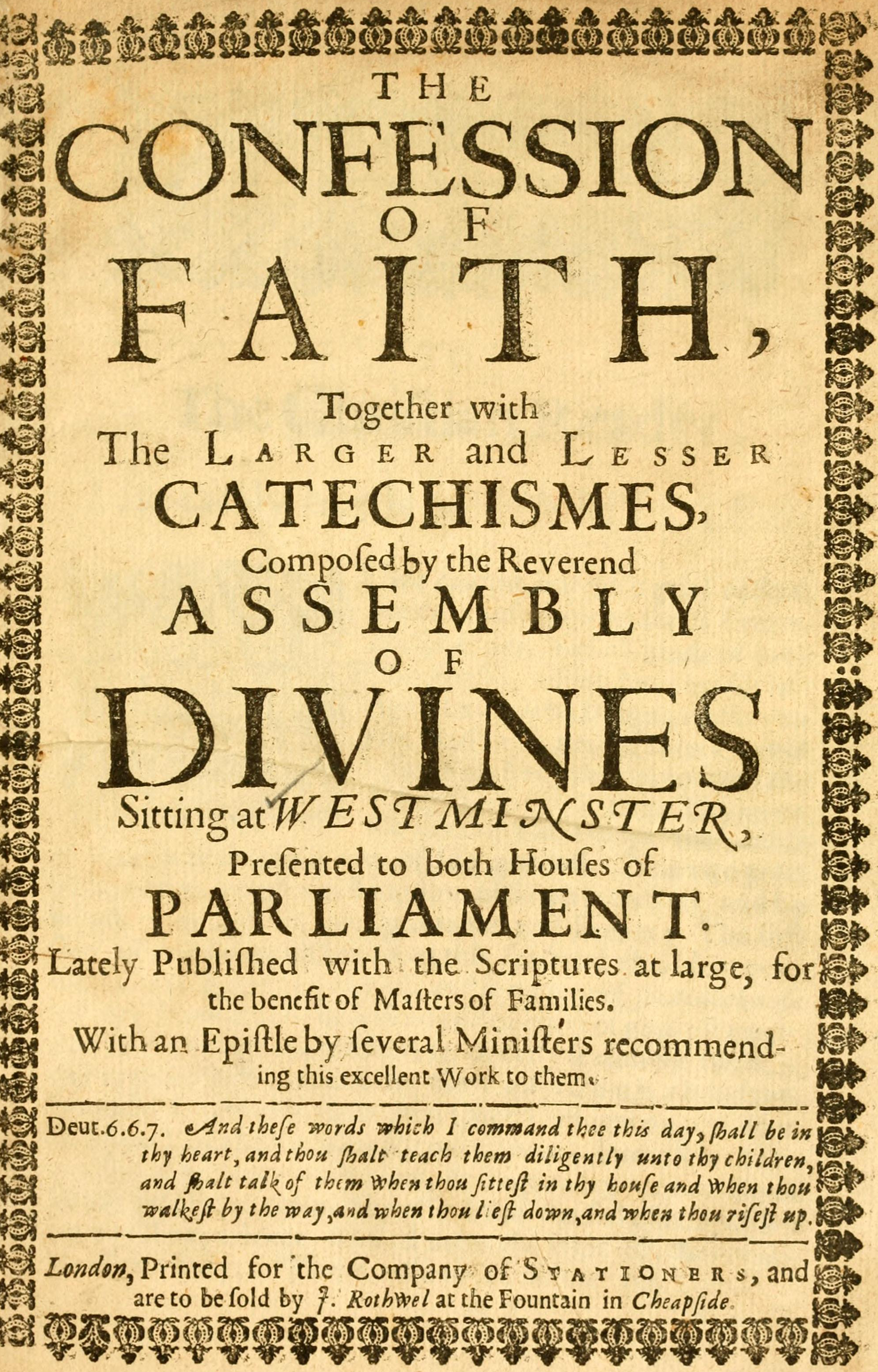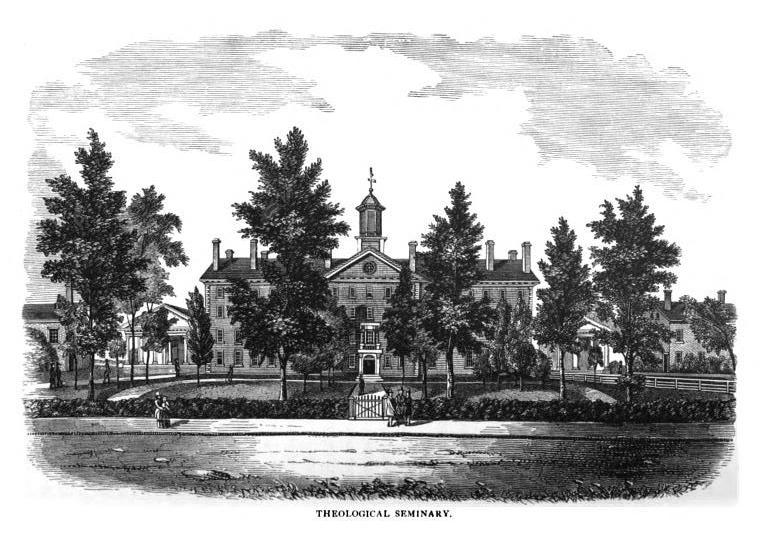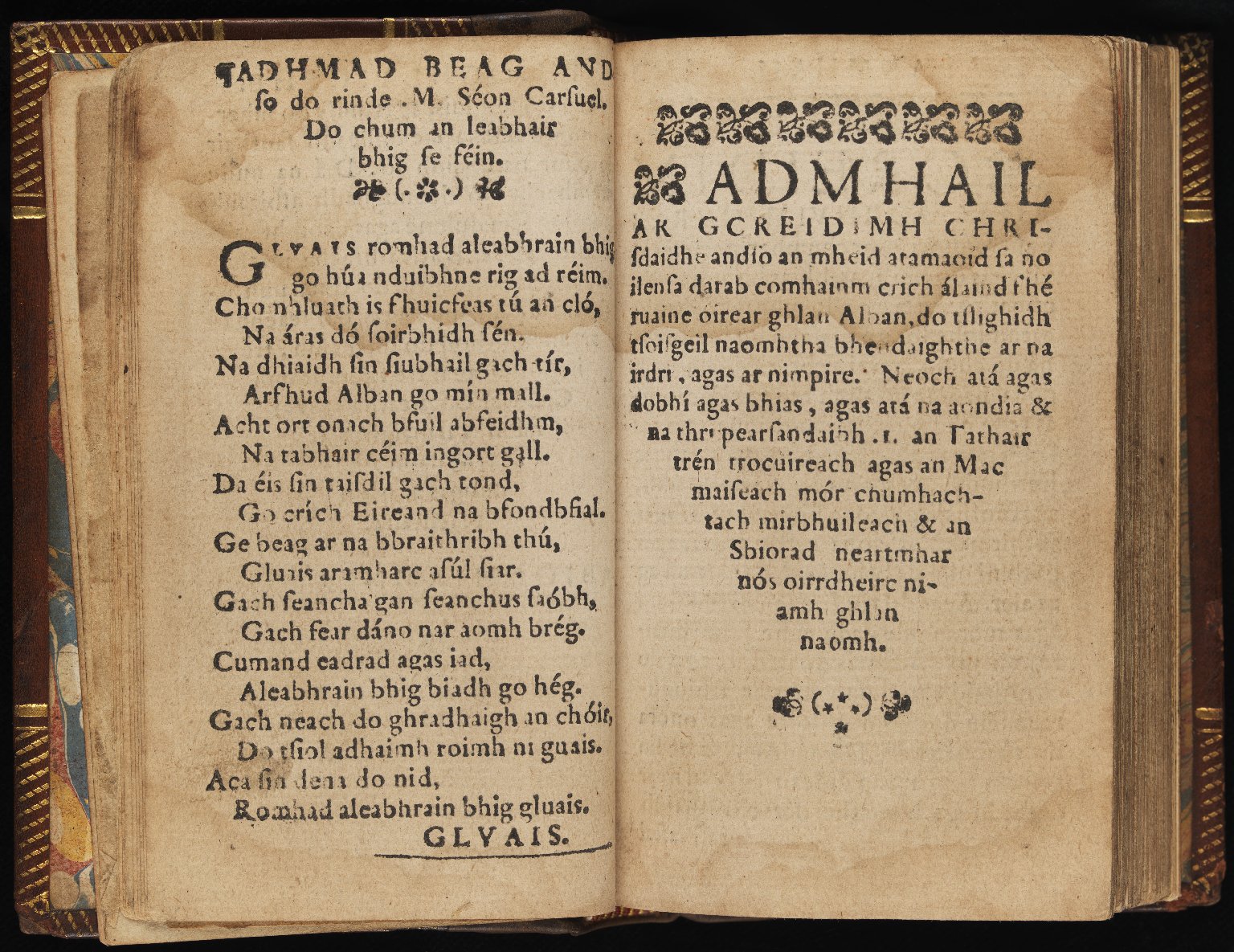|
Subordinate Standard
A subordinate standard is a Reformed confession of faith, catechism or other doctrinal or regulatory statement subscribed to by a Protestant church, setting out key elements of religious belief and church governance. It is ''subordinate'' to the Bible as the supreme standard, which is held as divinely inspired and without error. Examples of such standards are the Westminster Confession of Faith, drawn up by the 1646 Westminster Assembly as part of the Westminster Standards to be a confession of the Church of England. It became and remains the subordinate standard of doctrine in the Church of Scotland, and has been influential within Presbyterian churches worldwide. The Westminster Confession of Faith was modified and adopted by Congregationalists in England in the form of the Savoy Declaration (1658). Likewise, the Baptists of England modified the Savoy Declaration to produce the Second London Baptist Confession (1689). The Three Forms of Unity (the Belgic Confession, Heidelb ... [...More Info...] [...Related Items...] OR: [Wikipedia] [Google] [Baidu] |
Reformed Confession Of Faith
The reformed confessions of faith are the confessional documents of various Reformed churches. These express the doctrinal views of the churches adopting the confession. Confessions play a crucial part in the theological identity of reformed churches, either as standards to which ministers must subscribe, or more generally as accurate descriptions of their faith. Most confessions date to the 16th and 17th century. Catechisms, canons, theses and other such documents may not be confessions ''per se,'' yet these still serve as ''symbols'' of the reformed faith. Confessions Confessions state that church's beliefs in a full, while not exhaustive, way. Continental Reformed *Confession of the East Friesland Preachers (1528) * Tetrapolitan Confession (1530) *Synodical Declaration of Bern (1532) *First Confession of Basel (1534) * First Helvetic Confession/Second Confession of Basel (1536) *Geneva Confession (1536) * Altered Augsburg Confession (1540) *Confession of the English Con ... [...More Info...] [...Related Items...] OR: [Wikipedia] [Google] [Baidu] |
Heidelberg Catechism
The Heidelberg Catechism (1563), one of the Three Forms of Unity, is a Reformed catechism taking the form of a series of questions and answers, for use in teaching Reformed Christian doctrine. It was published in 1563 in Heidelberg, Germany. Its original title translates to ''Catechism, or Christian Instruction, according to the Usages of the Churches and Schools of the Electoral Palatinate''. Commissioned by the prince-elector of the Electoral Palatinate, it is sometimes referred to as the 'Palatinate Catechism.' It has been translated into many languages and is regarded as one of the most influential of the Reformed catechisms. Today, the Catechism is "probably the most frequently read Reformed confessional text worldwide". History Frederick III, sovereign of the Electoral Palatinate from 1559 to 1576, was the first German prince who professed Reformed doctrine although he was officially Lutheran. The Peace of Augsburg of 1555 originally granted toleration only for Lutheran ... [...More Info...] [...Related Items...] OR: [Wikipedia] [Google] [Baidu] |
Reformed Presbyterian Church Of North America
The Reformed Presbyterian Church of North America (RPCNA) is a Presbyterian church with congregations and missions throughout the United States, Japan, and Chile. Its beliefs—held in common with other members of the Reformed Presbyterian Global Alliance—place it in the conservative wing of the Reformed family of Protestant churches. Below the Bible—which is held as divinely inspired and without error—the church is committed to several " subordinate standards", together considered with its constitution: the Westminster Confession of Faith and Larger and Shorter Catechisms, along with its Testimony, Directory for Church Government, the Book of Discipline, and Directory for Worship. Primary doctrinal distinctions which separate the RPCNA from other Reformed and Presbyterian denominations in North America are: its continued adherence to the historical practice of Reformed Christianity, contained in the Westminster Confession of Faith, of practicing exclusive psalmody, a ... [...More Info...] [...Related Items...] OR: [Wikipedia] [Google] [Baidu] |
Directory Of Public Worship
The ''Directory for Public Worship'' (known in Scotland as the ''Westminster Directory'') is a liturgical manual produced by the Westminster Assembly in 1644 to replace the '' Book of Common Prayer''. Approved by the Parliament of England (Long Parliament) in 1644 and the Parliament of Scotland in 1645, the ''Directory'' is part of the Westminster Standards, together with the Westminster Confession of Faith, the Westminster Shorter Catechism, the Westminster Larger Catechism, and the Form of Church Government. Origins The movement against the ''Book of Common Prayer'', partly inspired by the English Parliament, had come to a head with the submission of the Root and Branch petition of 1640, which demanded "that the said government (i.e. episcopal system) with all its dependencies, roots and branches be abolished." Among the "branches" was the Book of Common Prayer, which was said to be a "Liturgy for the most part framed out of the Romish Breviary, Rituals, ndMass Book ... [...More Info...] [...Related Items...] OR: [Wikipedia] [Google] [Baidu] |
Antichrist
In Christian eschatology, Antichrist (or in broader eschatology, Anti-Messiah) refers to a kind of entity prophesied by the Bible to oppose Jesus in Christianity, Jesus Christ and falsely substitute themselves as a savior in Christ's place before the Second Coming. The term ''Antichrist'' (including one plural form)First Epistle of John, 1 John ; . Second Epistle of John, 2 John . is found four times in the New Testament, solely in the First Epistle of John, First and Second Epistle of John. Antichrist is announced as one "who denies the Father and the Son." The similar term ''pseudokhristos'' or "false Christ" is also found in the Gospels. In Gospel of Matthew, Matthew (Matthew 24#Jesus predicts the destruction of the Temple, chapter 24) and Gospel of Mark, Mark (Mark 13, chapter 13), Jesus alerts his disciples not to be deceived by the False prophet#Christianity, false prophets, who will claim themselves to be the Christ (title), Christ, performing "great Sign#Christianity, signs ... [...More Info...] [...Related Items...] OR: [Wikipedia] [Google] [Baidu] |
Pope
The pope is the bishop of Rome and the Head of the Church#Catholic Church, visible head of the worldwide Catholic Church. He is also known as the supreme pontiff, Roman pontiff, or sovereign pontiff. From the 8th century until 1870, the pope was the sovereign or head of state of the Papal States, and since 1929 of the much smaller Vatican City state. From a Catholic viewpoint, the primacy of the bishop of Rome is largely derived from his role as the apostolic successor to Saint Peter, to whom Petrine primacy, primacy was conferred by Jesus, who gave Peter the Keys of Heaven and the powers of "binding and loosing", naming him as the "rock" upon which the Church would be built. The current pope is Leo XIV, who was elected on 8 May 2025 on the second day of the 2025 papal conclave. Although his office is called the papacy, the ecclesiastical jurisdiction, jurisdiction of the episcopal see is called the Holy See. The word "see" comes from the Latin for 'seat' or 'chair' (, refe ... [...More Info...] [...Related Items...] OR: [Wikipedia] [Google] [Baidu] |
Westminster Shorter Catechism
The Westminster Shorter Catechism is a catechism written in 1646 and 1647 by the Westminster Assembly, a synod of English and Scottish theologians and laymen intended to bring the Church of England into greater conformity with the Church of Scotland. The assembly also produced the Westminster Confession of Faith and the Westminster Larger Catechism. A version without Scripture citations was completed on 25 November 1647 and presented to the Long Parliament, and Scripture citations were added on 14 April 1649. Background Catechesis is a practice of teaching the Christian faith. New converts to Christianity were taught through lectures during the first four centuries of the Church's existence, but this practice was largely abandoned with the rise of Christendom. Christian humanists and Protestant Reformers sought to revive the practice, including the Reformed. John Calvin's Genevan Catechism was especially influential among the British Reformed. The most popular British cate ... [...More Info...] [...Related Items...] OR: [Wikipedia] [Google] [Baidu] |
Westminster Larger Catechism
The Westminster Larger Catechism, along with the Westminster Shorter Catechism, is a central catechism of Calvinists in the English tradition throughout the world. History In 1643 when the Long Parliament of England called the Westminster Assembly to produce the Westminster Confession, it also asked for a directory of "catechising". The Assembly asked Herbert Palmer to produce a draft of the Larger Catechism. Robert Baillie and other Scottish delegates found the work disappointing. In December 1643 a committee was formed to write the Catechism. In January 1647 the Assembly gave up writing one catechism and split it into two. The Westminster Shorter Catechism was to be "easier to read and concise for beginners" and the Larger Catechism was to be "more exact and comprehensive". The Catechism was completed by the Westminster Assembly in 1647. It was then adopted by the General Assembly of the Church of Scotland in 1648 and (with modifications relating to the civil magistr ... [...More Info...] [...Related Items...] OR: [Wikipedia] [Google] [Baidu] |
Presbyterian Church In The United States Of America
The Presbyterian Church in the United States of America (PCUSA) was a Presbyterian denomination existing from 1789 to 1958. In that year, the PCUSA merged with the United Presbyterian Church of North America. The new church was named the United Presbyterian Church in the United States of America. It was a predecessor to the contemporary Presbyterian Church (USA). The denomination originated in colonial times when members of the Church of Scotland and Presbyterians from Ireland first immigrated to America. After the American Revolution, the PCUSA was organized in Philadelphia to provide national leadership for Presbyterians in the new nation. In 1861, Presbyterians in the Southern United States split from the denomination because of disputes over slavery, politics, and theology precipitated by the American Civil War. They established the Presbyterian Church in the United States, often called the "Southern Presbyterian Church". The PCUSA, in turn, was described as the Northern Pre ... [...More Info...] [...Related Items...] OR: [Wikipedia] [Google] [Baidu] |
Protestant Reformation
The Reformation, also known as the Protestant Reformation or the European Reformation, was a time of major theological movement in Western Christianity in 16th-century Europe that posed a religious and political challenge to the papacy and the authority of the Catholic Church. Towards the end of the Renaissance, the Reformation marked the beginning of Protestantism. It is considered one of the events that signified the end of the Middle Ages and the beginning of the early modern period in Europe. The Reformation is usually dated from Martin Luther's publication of the '' Ninety-five Theses'' in 1517, which gave birth to Lutheranism. Prior to Martin Luther and other Protestant Reformers, there were earlier reform movements within Western Christianity. The end of the Reformation era is disputed among modern scholars. In general, the Reformers argued that justification was based on faith in Jesus alone and not both faith and good works, as in the Catholic view. In the ... [...More Info...] [...Related Items...] OR: [Wikipedia] [Google] [Baidu] |
John Knox
John Knox ( – 24 November 1572) was a Scottish minister, Reformed theologian, and writer who was a leader of the country's Reformation. He was the founder of the Church of Scotland. Born in Giffordgate, a street in Haddington, East Lothian, Knox is believed to have been educated at the University of St Andrews and worked as a notary-priest. Influenced by early church reformers such as George Wishart, he joined the movement to reform the Scottish Church. He was caught up in the and political events that involved the murder of Cardinal David Beaton in 1546 and the intervention of the regent Mary of Guise. He was taken prisoner by French forces the following year and exiled to England on his release in 1549. While in exile, Knox was licensed to work in the Church of England, where he rose in the ranks to serve King Edward VI of England as a royal chaplain. He exerted a reforming influence on the text of the ''Book of Common Prayer''. In England, he met and married hi ... [...More Info...] [...Related Items...] OR: [Wikipedia] [Google] [Baidu] |
Scots Confession
The Scots Confession (also called the Scots Confession of 1560) is a Confession of Faith written in 1560 by six leaders of the Protestant Reformation in Scotland. The text of the Confession was the first subordinate standard for the Protestant church in Scotland. Along with the Book of Discipline and the Book of Common Order, this is considered to be a formational document for the Church of Scotland during the time. In August 1560 the Parliament of Scotland agreed to reform the religion of the country. To enable them to decide what the Reformed Faith was to be, they set John Knox as the superintendent over John Winram, John Spottiswood, John Willock, John Douglas, and John Row, known hereafter as "The Six Johns", to prepare a Confession of Faith. This they did in four days. The 25 Chapters of the Confession spell out a contemporary statement of the Christian faith as understood by the followers of John Calvin during his lifetime. Although the Confession and its accompanyi ... [...More Info...] [...Related Items...] OR: [Wikipedia] [Google] [Baidu] |









